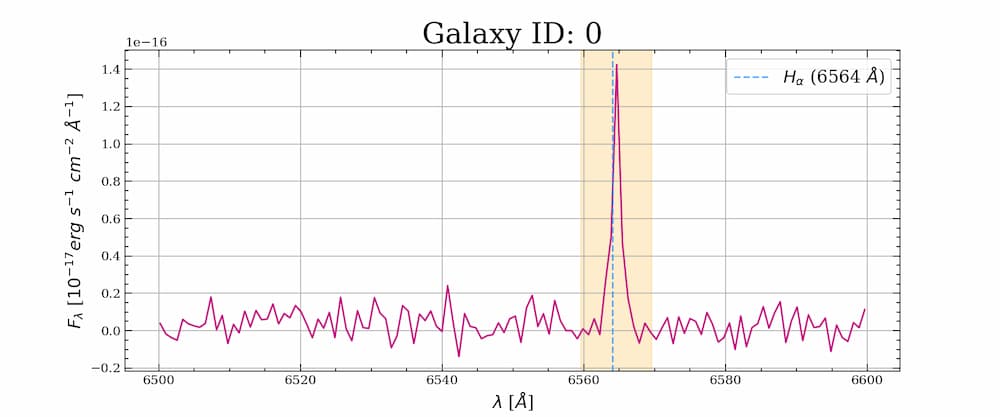H-alpha as a star formation indicator
This is a short excerpt from my manuscript draft.
 Figure 1: The star-forming nebula W51 is one of the largest "star factories" in the Milky Way galaxy. (Source: NASA/JPL-Caltech).
Figure 1: The star-forming nebula W51 is one of the largest "star factories" in the Milky Way galaxy. (Source: NASA/JPL-Caltech).Clusters of young stars are associated with dense interstellar matter from which they formed. Many of these stars are massive OB types, their hot temperature immediately photoionizing nearby hydrogen gas. The amount of ionizing photons emitted by OB stars and absorbed locally is traced by the Hα luminosity, which is the most prominent in the Balmer series and is a well-calibrated tracer of the ionized gas in star-forming regions. While UV traces the longer-lived O, B, and A stars, Hα primarily traces O and B stars. Hα is then used to measure SFR over the lifetimes of these stars (<20 Myr), both locally and out to z~2. Since Hα is directly proportional to the total ionizing flux in star-forming regions, several studies have relied on Hα measurements to study star formation properties.
As with UV-optical emissions, an important source of uncertainty in using Hα as SFR tracer is dust extinction. The intensities of the hydrogen lines grow fainter with absorption, whose effects are more pronounced towards the UV range. To correct for this, the Hα/Hβ line-flux ratio, hereafter the Balmer Decrement, is measured and compared to the intrinsic value that is based on local conditions only and that has a theoretical value of 2.86.
 Figure 2: Hα region of a dwarf galaxy.
Figure 2: Hα region of a dwarf galaxy.References:
Berman, Louis, and R. J. Trumpler. 1936. “The Effect of Space Reddening on the Balmer Decrement in Planetary Nebulæ.” Monthly Notices of the Royal Astronomical Society 96 (9): 890–99. https://doi.org/10.1093/mnras/96.9.890.
Geha, Marla, Yao-Yuan Mao, Risa H. Wechsler, Yasmeen Asali, Erin Kado-Fong, Nitya Kallivayalil, Ethan O. Nadler, et al. 2024. “The SAGA Survey. IV. The Star Formation Properties of 101 Satellite Systems around Milky Way-Mass Galaxies.” arXiv. https://doi.org/10.48550/arXiv.2404.14499.
Kennicutt Jr., Robert C. 1998. “STAR FORMATION IN GALAXIES ALONG THE HUBBLE SEQUENCE.” Annual Review of Astronomy and Astrophysics 36 (Volume 36, 1998): 189–231. https://doi.org/10.1146/annurev.astro.36.1.189.
Osterbrock, Donald E. Astrophysics of Gaseous Nebulae and Active Galactic Nuclei. University Science Books, 1989.
Shivaei, Irene, Naveen A. Reddy, Charles C. Steidel, and Alice E. Shapley. 2015. “INVESTIGATING Hα, UV, AND IR STAR-FORMATION RATE DIAGNOSTICS FOR A LARGE SAMPLE OF z ∼ 2 GALAXIES.” The Astrophysical Journal 804 (2): 149. https://doi.org/10.1088/0004-637X/804/2/149.
